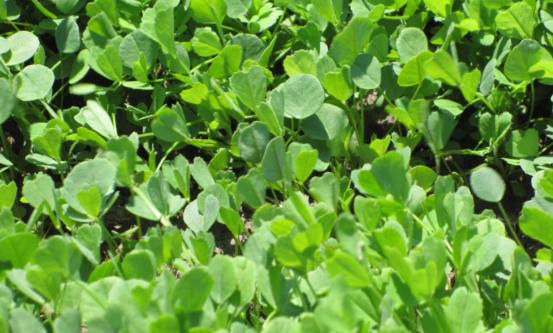3 MIN READ
Unlocking the Benefits of Alfalfa Seed Coating
August 22, 2017
Key Points
Alfalfa seed coating can help increase seedling survival rates, resulting in an equal or higher number of seedlings/acre with the same pounds/acre of product.
Strong alfalfa stand establishment is not the result of how many seeds are planted/acre but is determined by the number of successfully established seeds that become harvestable plants
Management of Seeding rate and planter calibration.
Topic
Establishing a stand. A successful, high yield potential alfalfa crop begins with 20 to 30 healthy seedlings/square foot (Figure 2). Obtaining that kind of stand can be influenced by several items, including site selection, land preparation, a firm seedbed, proper planting depth, variety selection, planting date, planting depth, seeding rate, planter calibration, pest control, seed inoculation, environment, and other factors.1 Selecting alfalfa seed coated with the right combination of fungicide, growth promotor, Sinorhizobium meliloti bacteria, and a protective seed coating can help ensure early-season vigor, improved stand, enhanced root system development, healthier seedlings, and longer stand life.3

Effect
What is in a seed coating? Monsanto’s alfalfa seed coating consists of 1) a seed treatment that can promote early-season vigor, 2) Rhizobium meliloti bacteria to promote nitrogen-fixing nodule development, 3) fungicide to help fight early-season diseases such as Phytophthora, Pythium, and downy mildew and 4) a lime-based coating with sulfur and molybdenum. The coating provides an ideal environment that can improve moisture absorption, germination percentage, and nodulation. Monsanto’s alfalfa seed coating increases the weight of the seed by 34%.
The 34% seed coating decreases seed mortality, which can result in higher seedling rates (up to 100% higher than unprotected seed),3 and equal or higher number of seedlings/acre with the same pounds/acre of product. The result is more healthy seedlings/acre and higher yield potential from the thicker, healthier stands. The target for strong alfalfa stand establishment is not the actual number of seeds planted/acre but is determined by the number of successfully established seedlings that become harvestable plants (Figure 1).

Action
Seeding rate and planter calibration. University and commercial research have shown that coated seed should be planted at the same pounds/acre rate as non-coated seed. Planting 34% coated seed can result in approximately 30% fewer seeds planted/acre. However, because of the benefits provided by seed coating, final seeding stands should be equal to or higher than with non-coated seed. Research also has indicated that seedling survival rate should be higher with coated seed.3
Because 34% coated seed weighs more than non-coated seed, the seed will flow through planting equipment at a different rate than non-coated seed. Some research trials have shown that coated seed flows approximately 30% faster than non-coated seed.2 Alfalfa growers should carefully calibrate planters for the specific seed they are planting to help ensure they are planting the desired number of pounds/acre. Always refer to the manufacturer's operating manual before performing any maintenance.
Summary
Alfalfa seed coating: 1) promotes early-season vigor, 2) increases seedling survival rates and stands, 3) includes seed treatment to help manage early-season diseases, and 4) can result in fewer seeds planted, but provides benefits that non-coated seed may not.
Sources
1Redfern, D., Huhnke, R., Armstrong, J., and Arnate, B. Alfalfa stand establishment. http://pods.dashr.okstate.edu
2Leep, R., Deyoung, J., and Min, D. Coated alfalfa seed, is it worth it? http://Forage.msu.edu
3Benefits of alfalfa seed coating. http://www.wlresearch.com
Web sources verified 06/08/2017
150820084041